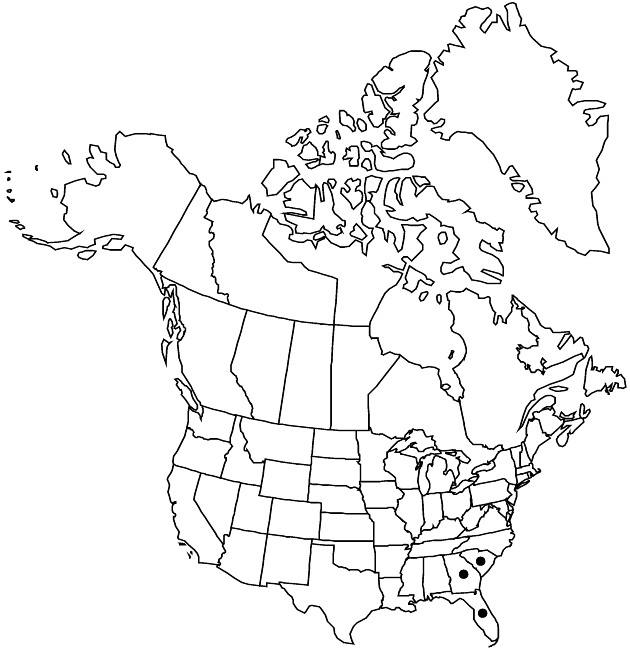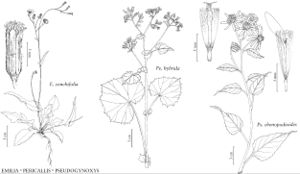Emilia sonchifolia
in R. Wight, Contr. Bot. India, 24. 1834.
Plants 20–80 cm, glabrous or ± villous. Stems 1, erect or somewhat lax, simple or branched. Leaves mostly in proximal 1/2; usually petiolate; blades ovate to obovate or oblanceolate, mostly 5–12 × 1.5–4.5 cm (distal smaller, bractlike), margins often deeply lobed to lyrate-pinnatifid. Involucres urceolate to campanulate, 9–12 mm, relatively slender, lengths mostly 3–4 times diams. Phyllaries usually 8. Florets 15–30 [–40], surpassing involucres by 0–1 (–2) mm; corollas usually lavender, pinkish, or purplish, rarely reddish, lobes 0.5–0.7 [–1.5] mm; style appendages 0–0.1 mm. 2n = 10.
Phenology: Flowering probably year round, mostly Oct–Mar.
Habitat: Disturbed sites, old fields, roadsides
Elevation: 0–100 m
Distribution

Introduced; Fla., Ga., S.C., Asia, also in New World tropics
Discussion
Emilia sonchifolia is a pantropical weed of Asiatic origin and should be expected as an occasional escape in the flora. D. H. Nicolson (1980) treated the eastern Asian representatives of E. sonchifolia, which have corolla lobes 1.1–1.5 mm, as E. sonchifolia var. javanica (Burman f.) Mattfeld. In the flora, plants of E. sonchifolia have corolla lobes 0.5–0.8 mm and are treated as var. sonchifolia. See Nicolson (p. 398) for discussion of nomenclatural attribution.
Selected References
None.
Lower Taxa
"-4timesdiams" is not declared as a valid unit of measurement for this property.
